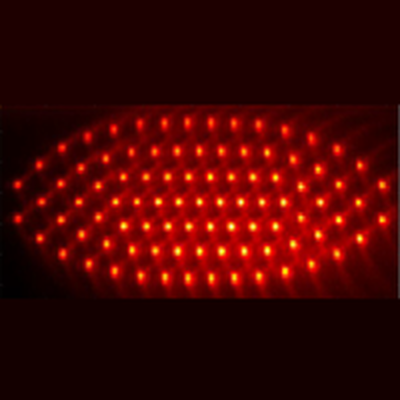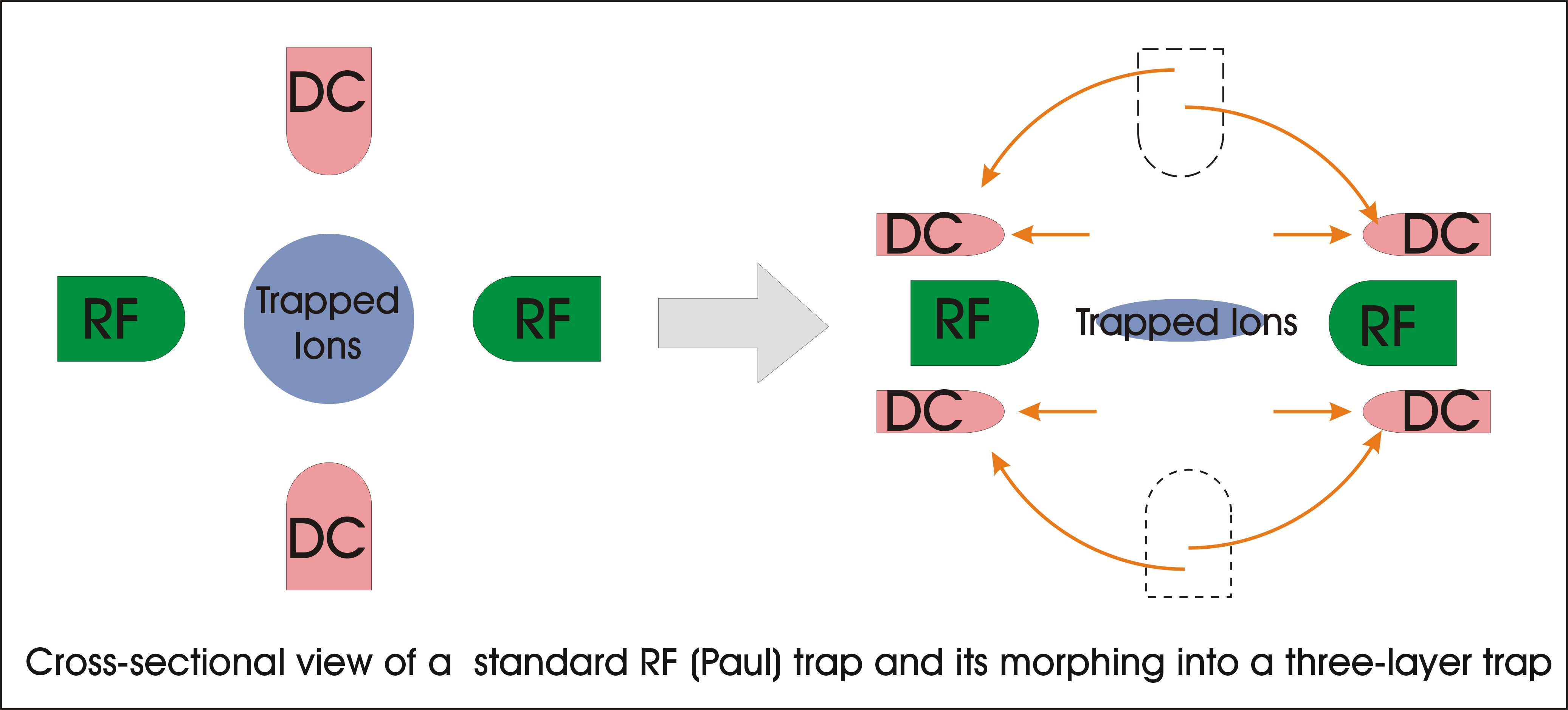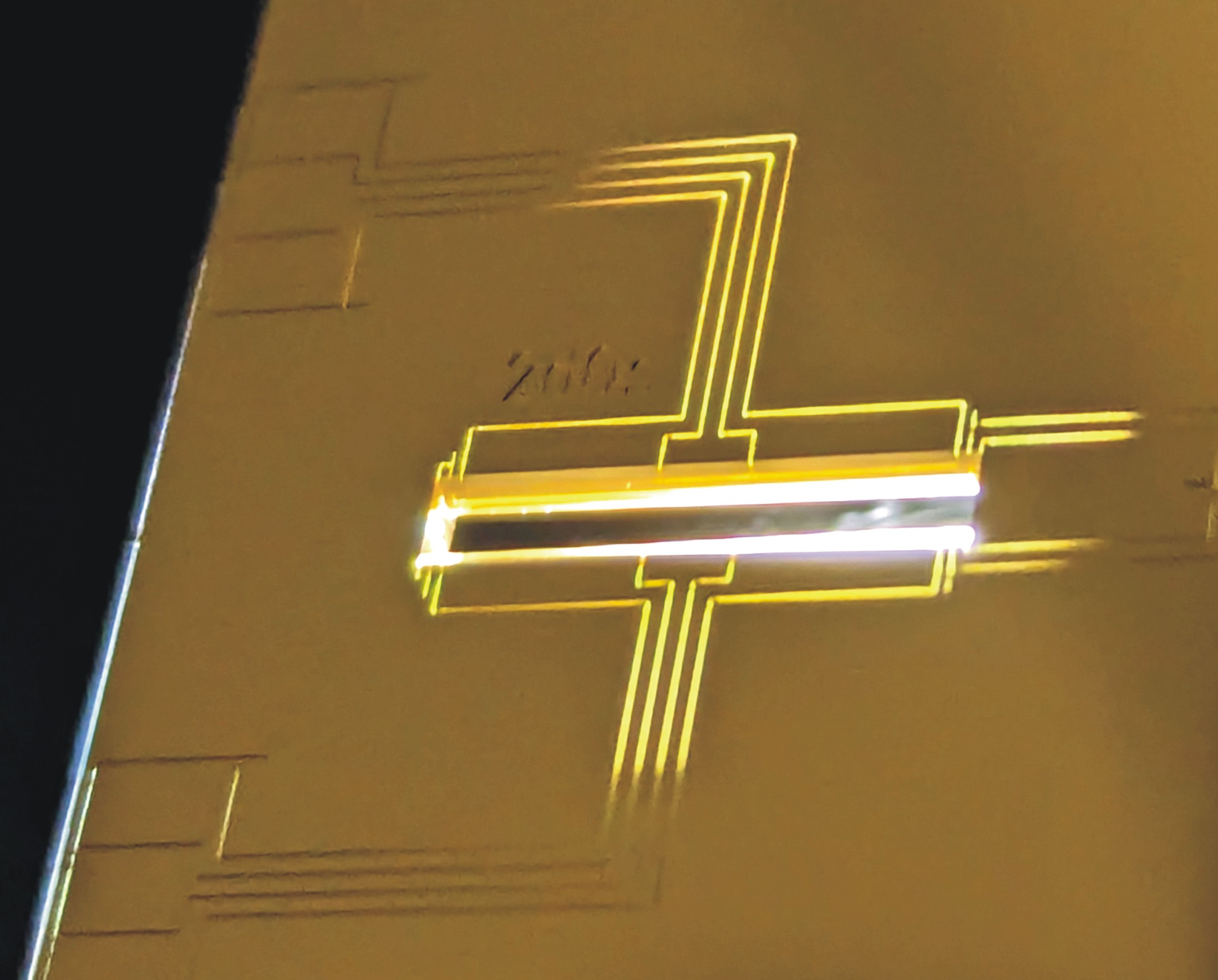The trap described here was fabricated at Translume under the direction of Dr. Mark Dugan. The initial design was provided by Dr. Helene Hainzer and her co-workers at the University of Innsbruck. Some features were modified byTranslume.
Reference: “Controlling Two-Dimensional Coulomb Crystals of More Than 100 Ions in a Monolithic Radio-Frequency Trap”, Dominik Kiesenhofer, Helene Hainzer, Artem Zhdanov, Philip C. Holz, Matthias Bock, Tuomas Ollikainen, and Christian F. Roos
PRX Quantum 4, 020317 – Published 28 April 2023
Application
The design of this trap was optimized by the end-users for quantum simulation involving a large number of individually controllable particles. Control over large ion crystals is challenging: Keeping a long one-dimensional crystal linear requires extremely anisotropic trapping potentials, ultimately limiting the number of ions that can be controlled with high fidelity. An alternative pathway to scale up trapped-ion architectures is to use a second spatial dimension, which is an approach recently taken by several groups and also the one taken for the experiment described in the referenced article.

A stationary 91-ion crystal (image courtesy of Dr. Helene Hainzer)
Design Overview
The design differs from a standard linear Paul trap in that the dc blades are split and projected to the top and bottom of the rf blades as shown below. Thus, effectively, the electrode geometry realizes a three-layer trap. Further the dc electrodes are recessed with respect to the rf electrode to allow additional optical access at 45◦ angles from the top and the bottom.
Design Implementation
The designers refer to their trap as a “three-layer” trap; and obviously this trap could have been machined from three separate layers and later hand-assembled. However, this would have almost certainly resulted in alignment imperfections, which would have prevented working with large 2D ion crystals.
Therefore, the trap was fabricated from a single piece of glass – this monolithic approach allowing precise electrode arrangements without the need for hand assembly.
Fabrication Considerations
The trap was designed to operate at an elevated rf voltage of approximately 1 kV peak to peak. The isolation trenches between the RF electrode and the RF ground had to be scaled accordingly.
Related Publications:
- “Controlling Two-Dimensional Coulomb Crystals of More Than 100 Ions in a Monolithic Radio-Frequency Trap”, Dominik Kiesenhofer, Helene Hainzer, Artem Zhdanov, Philip C. Holz, Matthias Bock, Tuomas Ollikainen, and Christian F. Roos. PRX Quantum 4, 020317 – Published 28 April 2023
- “Correlation Spectroscopy with Multiqubit-Enhanced Phase Estimation”, Helene. Hainzer, D. Kiesenhofer, T. Ollikainen, M. Bock, F. Kranzl, M. K. Joshi,, G. Yoeli, R. Blatt, T. Gefen, and C. F. Roos. Physical Review X, 2024; 14 (1) DOI: 10.1103/PhysRevX.14.011033 – Published 29 February 2024


